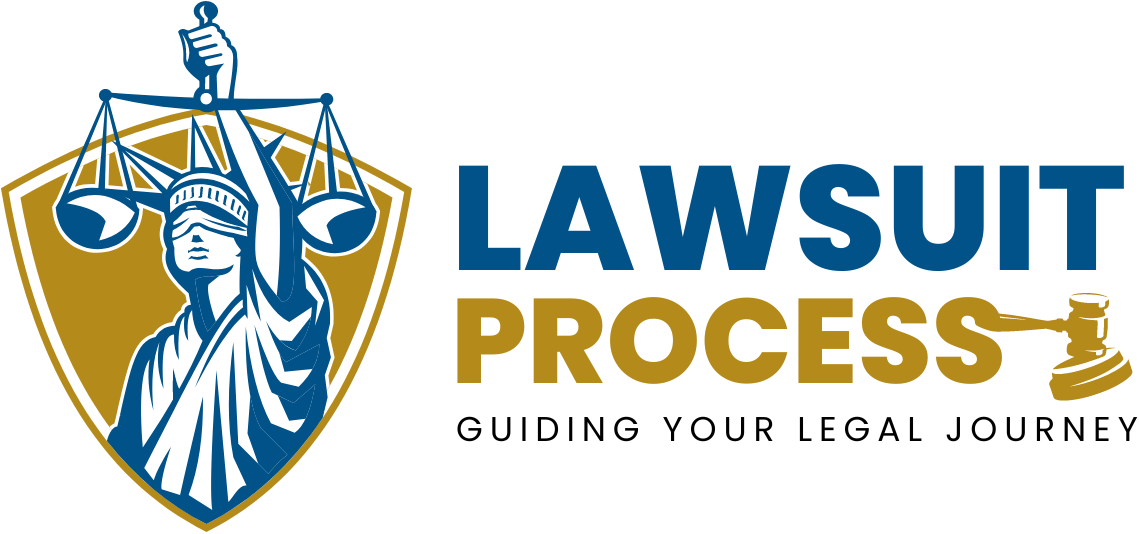Filing a lawsuit is a major step in seeking justice, but it’s only the beginning of a longer process. Whether you’re suing someone or defending yourself, it helps to know what happens next. So, what happens after you file a lawsuit? This guide breaks down in a plain and simple language, the steps that follow after a lawsuit is filed.
Do you need help filing a lawsuit or with any legal matters? Check our lawyers directory to find the right lawyer for your legal needs.
Table of Contents
- Step 1: The Complaint Is Served
- Step 2: The Defendant Responds
- Step 3: Discovery Begins
- Step 4: Pre-Trial Motions
- Step 5: Settlement Negotiations
- Step 6: The Trial
- Step 7: The Verdict
- Step 8: Appeals
- Step 9: Enforcing the Judgment
- Key Takeaway
- Frequently Asked Questions
Step 1: The Complaint Is Served
Once you file the lawsuit with the court, the next step is to notify the person or entity you’re suing — called the “defendant.” This is done through a legal document called a summons and a copy of your complaint. Together, these documents inform the defendant that they are being sued and why.
This step is known as “service of process.” Usually, a professional process server, sheriff, or even certified mail is used to deliver these papers. If the defendant isn’t properly served, the case can stall.
Step 2: The Defendant Responds
The defendant typically has 20 to 30 days to respond, depending on the court and jurisdiction. Their response can be:
- Answer: They admit or deny the claims made in your complaint.
- Motion to Dismiss: They ask the court to throw out the case due to legal issues.
- Counterclaim: They sue you back, claiming you caused them harm instead.
If the defendant doesn’t respond in time, you can ask the court for a “default judgment,” which may result in you winning the case automatically.
Step 3: Discovery Begins
After both sides have filed their initial paperwork, the discovery phase starts. This is when both parties gather evidence from each other to build their cases. It’s often the longest part of the lawsuit process.
Discovery tools include:
- Interrogatories: Written questions that must be answered under oath.
- Requests for Documents: Each side can request relevant documents from the other.
- Depositions: In-person or virtual interviews conducted under oath, often recorded or transcribed.
This phase is all about uncovering facts, not hiding them. Everything from emails to photos to financial records could become evidence.
Step 4: Pre-Trial Motions
Before the trial begins, either side can file motions to influence how the trial will proceed — or even try to avoid trial entirely.
- Motion for Summary Judgment: One party asks the judge to decide the case based on the evidence already presented, without going to trial.
- Motion to Compel: Used if the other side is not cooperating in discovery.
- Motion to Exclude Evidence: Attempts to prevent certain evidence from being used at trial.
The court will review the motions and decide what to allow or deny. These decisions can dramatically affect the outcome of the case.
Step 5: Settlement Negotiations
Believe it or not, most lawsuits never go to trial. That’s because both sides usually try to settle the case to avoid the time, cost, and uncertainty of a courtroom battle.
Settlements can happen at any stage — even during trial. In many courts, the judge may even require mediation or a settlement conference before setting a trial date.
If a settlement is reached, both parties sign a written agreement, and the case is dismissed.
Step 6: The Trial
If settlement isn’t possible, the case proceeds to trial. It could be a jury trial or a bench trial (decided by a judge). Here’s what to expect:
- Opening statements: Both sides outline their case.
- Presentation of evidence: Witnesses testify, and documents are introduced.
- Cross-examinations: The opposing party can question each witness.
- Closing arguments: Final summary and plea to the jury or judge.
The judge or jury then deliberates and makes a decision. This could take hours or even days, depending on the complexity of the case.
Step 7: The Verdict
The verdict is the final decision. If you win, the judge or jury may award damages — money to compensate for your loss. If you lose, you may owe the other party or walk away with nothing.
The verdict is legally binding, but it’s not necessarily the end. Either side can still appeal.
Step 8: Appeals
If one side believes a legal mistake was made during the trial, they can file an appeal. This isn’t a second trial. Instead, a higher court reviews what happened and decides if the trial was fair.
Appeals can result in:
- Affirming the verdict (no changes)
- Reversing the verdict (a win becomes a loss)
- Sending the case back for a new trial
Appeals can take months or even years, depending on the court system.
Step 9: Enforcing the Judgment
If you win and are awarded money, the court won’t collect it for you. You may have to take additional legal steps to enforce the judgment, especially if the losing party refuses to pay.
Enforcement options include:
- Wage garnishment
- Bank account levies
- Property liens
Every state has different rules about how and when you can collect a judgment, so you may need legal help with this step.
Key Takeaway on What Happens After You File a Lawsuit
Filing a lawsuit sets a legal process in motion, but it doesn’t guarantee a fast or easy resolution. From serving papers to trial and beyond, the steps are structured and often complex. Understanding the process can give you clarity and control as your case unfolds.
- The lawsuit begins with serving the complaint to the defendant.
- The defendant must respond within a set time or risk a default judgment.
- Discovery allows both sides to gather and exchange evidence.
- Pre-trial motions can shape or even end the case early.
- Most lawsuits settle before trial, saving time and money.
- If the case goes to trial, the court decides the outcome based on evidence.
- A verdict can be appealed if errors occurred during trial.
- Winning the case doesn’t guarantee payment — enforcement may be required.
Frequently Asked Questions
1. How long does a lawsuit take after it’s filed?
A lawsuit timeline varies widely depending on the case complexity, court schedule, and whether the case settles early. Some lawsuits resolve in a few months, while others can take years. On average, a civil lawsuit may take 12 to 24 months from filing to final judgment.
2. Do I have to go to court after filing a lawsuit?
Not always. Many lawsuits are resolved through settlements before reaching trial. However, if the case doesn’t settle and proceeds to trial, you will likely need to appear in court to present your case or respond as a defendant.
3. What happens if the defendant ignores the lawsuit?
If the defendant doesn’t respond within the required time (usually 20 to 30 days), you can request a default judgment from the court. If granted, the court may rule in your favor without a trial, awarding you damages or relief requested in your complaint.
4. Can a lawsuit be settled after it is filed?
Yes, a lawsuit can be settled at any time — before filing, after discovery, or even during trial. Settlement agreements are voluntary and often save both sides time and legal costs. Courts even encourage settlement to avoid prolonged litigation.
5. What is the discovery phase in a lawsuit?
Discovery is the process where both parties exchange information, evidence, and witness details related to the case. This phase includes written questions (interrogatories), document requests, and depositions. It helps each side prepare for trial or settlement negotiations.
6. What are pre-trial motions and why are they important?
Pre-trial motions are legal requests made before trial begins. They can shape how the trial proceeds or even end the case. Common motions include motions to dismiss, motions for summary judgment, and motions to exclude certain evidence. Judges rule on these before the trial starts.
7. Can I appeal if I lose the lawsuit?
Yes, if you lose a lawsuit, you have the right to appeal the decision to a higher court. An appeal must usually be filed within a set time, such as 30 days after the judgment. The appellate court reviews the trial process to determine if legal errors were made.
8. How do I collect money if I win a lawsuit?
Winning a judgment doesn’t guarantee payment. If the losing party doesn’t pay voluntarily, you may need to take enforcement actions. These include wage garnishment, bank levies, or placing a lien on the person’s property. You may also need help from a collections attorney.
9. Will a lawsuit show up on my public record?
Yes, most lawsuits are part of the public record. This means anyone can access the case details through the court system. Information such as the names of the parties, case number, filings, and outcomes are typically available online or through court clerks.
10. What happens if the case is dismissed?
If a case is dismissed, it ends without a trial or judgment. Dismissals can be voluntary (both parties agree to end the case) or involuntary (a judge decides the case lacks merit or violates court rules). Depending on the type of dismissal, you may or may not be able to refile the case later.










